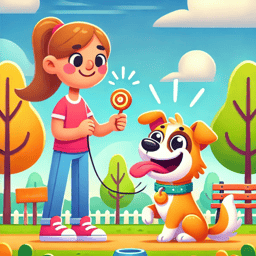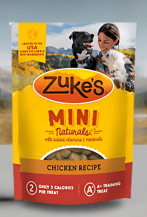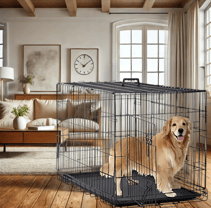I believe in educating dog owners about their breed, unlocking new levels of understanding, and taking that exciting next step together!
50 Essential Dog Training Terms Every Dog Trainer Should Know
This blog post introduces 50 essential dog training terms to help owners and trainers understand canine behavior and training techniques. Covering concepts from acclimation to Zen Bowl, it explains key terms related to reinforcement, conditioning, impulse control, and behavior modification. Whether you're a beginner or an experienced trainer, mastering these terms will enhance communication with your dog and improve training success. The glossary includes practical insights on cues, reactivity, desensitization, and proofing, making it a valuable resource for anyone looking to build a stronger bond with their furry companion.
TRAINING TIPS
Tiffany Sandquist
3 min read
50 Essential Dog Training Terms Every Dog Owner Should Know
Dog training is both an art and a science, with its own set of terminology that every dog owner, trainer, or enthusiast should understand. Whether you're just starting out or looking to refine your training skills, this glossary of 50 key dog training terms will help you communicate better with your pup and deepen your understanding of canine behavior.
A - D
1. Acclimation – Gradually introducing a dog to a new environment or stimulus.
2. Aggression – Hostile or defensive behavior such as growling, barking, or biting.
3. Arousal – A dog’s level of excitement or stimulation, affecting behavior and learning.
4. Avoidance Behavior – When a dog tries to escape or avoid an uncomfortable situation.
5. Back-Chaining – Teaching a behavior by starting at the last step and working backward.
6. Behavior Modification – Changing unwanted behaviors into desirable ones through training techniques.
7. Bite Inhibition – A dog’s ability to control the force of its bite, typically learned as a puppy.
8. Bridge Signal – A sound or cue (like a clicker) marking the exact moment a behavior is correct.
9. Classical Conditioning – Learning by association, such as Pavlov’s dogs associating a bell with food.
10. Clicker Training – A positive reinforcement method using a clicker to mark desired behaviors.
11. Compulsion Training – A method using physical force or correction to shape behavior.
12. Counterconditioning – Changing a dog’s emotional response to a stimulus, such as making a dog enjoy something it once feared.
13. Cue – A verbal or physical signal that tells a dog to perform a behavior.
14. Desensitization – Gradual exposure to a stimulus to reduce fear or reactivity.
15. Displacement Behavior – A seemingly unrelated action a dog performs when stressed, such as yawning or scratching.
16. Distance Increasing Signals – Body language used by a dog to ask for space, like growling or backing away.
17. Distance Decreasing Signals – Invitations for interaction, like wagging tails or play bows.
18. Drive – A dog’s natural motivation (e.g., food drive, prey drive, or play drive).
E - M
19. Extinction – Stopping reinforcement for an unwanted behavior, causing it to fade over time.
20. Extinction Burst – A temporary increase in an unwanted behavior when reinforcement is first removed.
21. Fear Period – A developmental stage when puppies are more sensitive to negative experiences.
22. Flooding – Overwhelming a dog with a feared stimulus until it stops reacting (generally not recommended).
23. Focus Training – Teaching a dog to pay attention to the handler despite distractions.
24. Force-Free Training – Training without intimidation, fear, or physical punishment.
25. Frustration Tolerance – A dog’s ability to handle delays in getting what they want.
26. Generalization – The ability of a dog to apply learned behaviors in different settings.
27. Habituation – When a dog stops reacting to a repeated stimulus, like ignoring street noises.
28. Hand Targeting – Teaching a dog to touch a human’s hand with its nose as a foundational skill.
29. Impulse Control – The ability to resist an immediate urge, such as waiting instead of lunging for food.
30. Jumping Up – A common behavior dogs use for attention, which can be managed through training.
31. Luring – Using a treat or object to guide a dog into a desired position.
32. Marking (Training Term) – Using a sound or word (e.g., "yes" or a click) to indicate a correct behavior.
33. Mat Training – Teaching a dog to settle on a designated mat or bed.
34. Muzzle Training – Conditioning a dog to wear a muzzle comfortably for safety reasons.
N - Z
35. Negative Punishment (P-) – Removing something the dog wants to decrease unwanted behavior, like turning away when a dog jumps for attention.
36. Negative Reinforcement (R-) – Removing something unpleasant to encourage a behavior, such as stopping leash pressure when a dog walks properly.
37. Operant Conditioning – Learning through consequences, involving reinforcement and punishment.
38. Over-Threshold – When a dog is too stressed or aroused to learn effectively.
39. Positive Punishment (P+) – Adding something unpleasant to reduce a behavior, such as leash correction.
40. Positive Reinforcement (R+) – Adding something pleasant to increase a behavior, like giving a treat for sitting.
41. Premack Principle – Using a preferred activity to reinforce a less preferred behavior (e.g., "sit" before being allowed to play).
42. Proofing – Teaching a dog to perform behaviors reliably in different environments.
43. Reactivity – Overreaction to stimuli, often due to fear, frustration, or excitement.
44. Redirected Aggression – When a dog, unable to react to its target, redirects aggression onto another object or person.
45. Release Cue – A command that signals a dog it’s free from a stay (e.g., "okay!").
46. Resource Guarding – Defensive behavior over food, toys, or other valuables.
47. Sequential Learning – Learning through a step-by-step process, building on past training.
48. Shaping – Reinforcing successive approximations of a behavior until the full behavior is achieved.
49. Threshold – The level at which a dog reacts to a stimulus (above threshold = reactive; below threshold = calm).
50. Zen Bowl – A training exercise teaching dogs impulse control around food.
Final Thoughts
Understanding these terms can help any dog owner or trainer communicate more effectively with their dog and improve their training techniques. Whether you're working on obedience, behavior modification, or just deepening your bond with your pup, knowledge is key!
Do you use any of these training terms in your daily routine? Let us know in the comments below!









Sit Happens Here
Transforming lives through dog training excellence.
Contact Us
971-218-9622
© 2024. All rights reserved.
